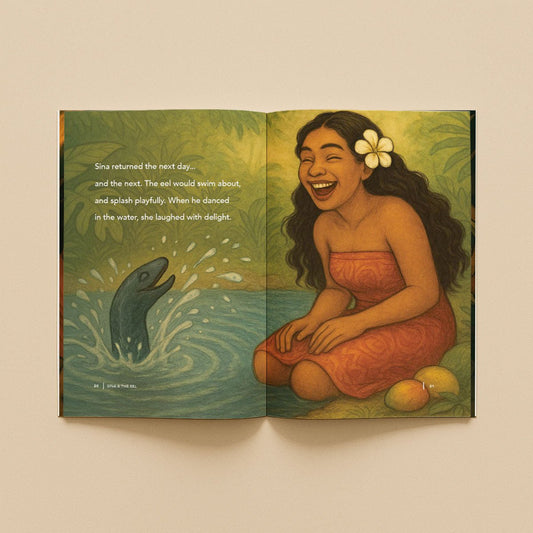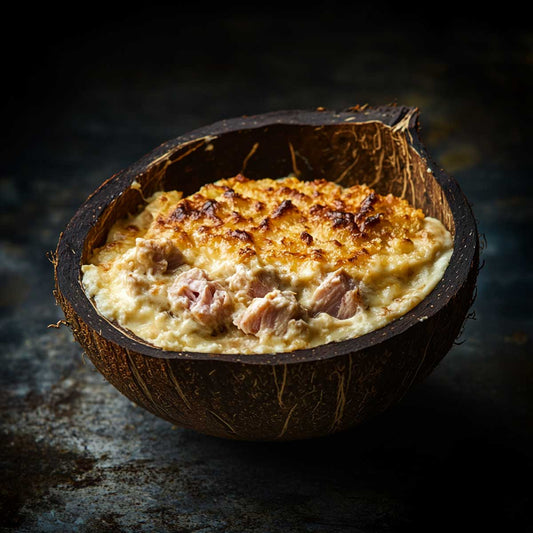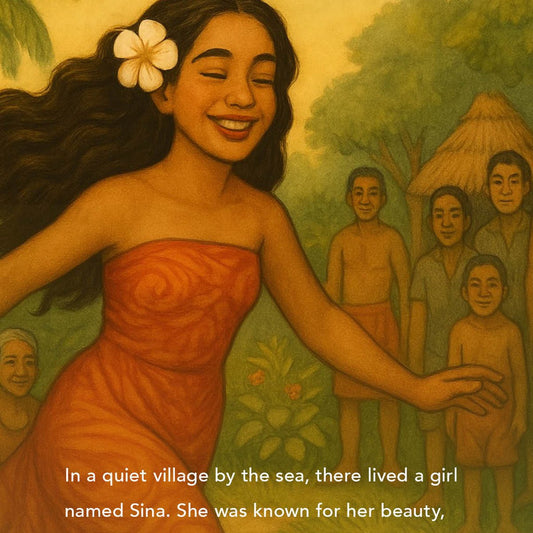Are Samoan People From Hawaii? Tracing the Ancient and Modern Connections Between Two Island Giants
The vast Pacific Ocean is home to two of the most recognizable and influential island cultures in the world: the people of Sāmoa and the people of Hawaiʻi. They share a deep Polynesian heritage, but their histories and geographic origins are distinct. This often leads to a common question for those unfamiliar with Pacific geography: Are Samoan people from Hawaii?
The straightforward answer is No. The Samoan people are indigenous to the Samoan archipelago, located thousands of miles southwest of Hawaiʻi. However, the history of these two island groups is intertwined in both ancient mythology and modern migration, creating a strong, modern connection that sometimes leads to confusion about their origin.
This comprehensive article will explore the separate origins of these two great seafaring cultures, their shared Polynesian roots, and the 20th-century migration that established a significant and thriving Samoan population in Hawaiʻi.
Geographic and Historical Origins: Two Separate Homelands
To understand why Samoans are not from Hawaiʻi, we must look at where each culture originated and where they are located on the map of the Pacific.
1. Sāmoa: The Cradle of West Polynesia
The Samoan archipelago is located in the region known as West Polynesia. It is home to the Independent State of Samoa (formerly Western Samoa) and the U.S. territory of American Samoa. Archaeological evidence, most notably the discovery of Lapita pottery shards, confirms that the ancestors of the Samoans settled these islands as early as 1000 BCE.
Sāmoa is considered one of the cradles of Polynesian civilization. Along with Tonga and Fiji, Sāmoa was a primary hub where the distinct Polynesian culture, language, and social structure developed before the Great Voyages of expansion began.
2. Hawaiʻi: The Apex of the Polynesian Triangle
The Hawaiian Islands are located at the northernmost point of the vast Polynesian Triangle, a distance of approximately 2,500 miles (4,000 km) from Sāmoa. The indigenous people of Hawaiʻi, the Native Hawaiians (Kānaka Maoli), trace their ancestry to explorers who sailed from the islands of central and eastern Polynesia, particularly the Marquesas and Tahiti, much later than the initial settlement of Sāmoa.
While Hawaiʻi and Sāmoa are both proudly Polynesian, they represent different ends of the original migration timeline and geographic spread, making them two distinct cultures with separate histories of origin.
The Polynesian Connection: One Family, Separate Paths
Despite their separate homelands, Samoan and Hawaiian people share a common ancestry, a concept central to the Polynesian identity: the belief that they are "the same people, just from different stops along the canoe journey."
Shared Ancestry and Language
Both the Samoan and Hawaiian languages (Gagana Sāmoa and ʻŌlelo Hawaiʻi) belong to the Polynesian language family. While they are not mutually intelligible today, they share numerous cognates (words with a common origin) and phonetic patterns that reveal their common root in a language spoken over 2,000 years ago.
- Sāmoa: Matai (Chief/Head of family)
- Hawaiʻi: Makaʻāinana (Commoner/People of the land - though the chief concept is represented by Aliʻi)
- Sāmoa: Lagi (Sky/Heaven)
- Hawaiʻi: Lani (Sky/Heaven)
- Sāmoa: Tele (Big)
- Hawaiʻi: Nui (Big)
Shared Cultural Pillars
The core values that define the Samoan way of life, Fa'a Sāmoa (The Samoan Way), are deeply similar to the foundational principles of Hawaiian culture, Aloha and Mālama ʻāina (caring for the land).
- Importance of Family: The Samoan 'aiga (extended family) and the Hawaiian ʻohana (family, related or not) both stress the highest importance on kinship, mutual support, and respect for elders.
- Traditional Arts: Both cultures practice sophisticated body art and carving. The Samoan tatau (tattoo) and the Hawaiian kakau (tattoo) stem from the same Polynesian origin, embodying status, lineage, and history.
- Canoe Culture: Both people were masters of the sea, navigating the Pacific in large double-hulled canoes (vaʻa in Sāmoa, waʻa in Hawaiʻi) guided by the stars and ocean patterns.
The Modern Samoan Diaspora in Hawaiʻi
The reason many people associate Samoan people with Hawaiʻi is due to a significant wave of migration that occurred in the 20th century. Today, Hawaiʻi hosts one of the largest and most concentrated populations of Samoans outside of the Samoan islands, particularly on the island of Oʻahu.
Post-WWII Migration
Samoan migration to the United States and its territories accelerated after World War II. A key factor was the political status of American Samoa, which became a U.S. territory in 1900. Unlike citizens of other territories, American Samoans are designated as U.S. Nationals, which allows them to travel and work freely within the United States.
- Military Connection: Many American Samoans enlisted in the U.S. armed forces. In the mid-20th century, the closing of the U.S. Navy base in Pago Pago led to military families relocating to U.S. bases in Hawaiʻi, particularly in and around Honolulu.
- Employment Opportunities: Hawaiʻi served as a natural stepping stone for Samoan migrants seeking economic opportunities, given its geographic proximity (relative to the mainland U.S.) and its existing Polynesian community.
- Independent Sāmoa: Following the independence of Western Samoa (now the Independent State of Samoa) in 1962, citizens from this side of the archipelago also migrated to Hawaiʻi, often through family sponsorship.
The Samoan Community Today
Today, the Samoan community is a deeply ingrained and vital part of Hawaiian society, particularly in areas like Lāʻie, home to the Polynesian Cultural Center, where the Samoan Village exhibit is a major feature. The Samoan people in Hawaiʻi maintain their unique cultural identity, often speaking Gagana Sāmoa, participating in traditional church and community life, and contributing significantly to the state's athletic, cultural, and spiritual landscape.
While Samoans are not from Hawaiʻi in the indigenous sense, the term "Samoan from Hawaiʻi" accurately describes the many thousands of Samoan-Americans who call the islands their home, living alongside their Native Hawaiian relatives under the shared canopy of Polynesian heritage.
Celebrating Distinct but Connected Cultures
Understanding the difference between the Samoan and Hawaiian origins is crucial to respectfully appreciating the heritage of both groups. They are two distinct, beautiful, and powerful cultures that represent the sheer ingenuity and navigational prowess of the Polynesian people.
To summarize:
| Aspect | Samoan People | Native Hawaiians |
|---|---|---|
| Indigenous Homeland | The Samoan Archipelago (Independent State of Samoa and American Samoa). | The Hawaiian Islands. |
| Geographic Region | West Polynesia. | East/Central Polynesia (The northern apex of the Triangle). |
| Settlement Timeframe | Approximately 1000 BCE (One of the first settled areas of Remote Oceania). | Later settlement, tracing back to migrations from the Marquesas and Tahiti. |
| Current Status in Hawaiʻi | Large and vital community established through 20th-century migration. | The Indigenous people of the islands. |
The story of the Samoan people is one of immense strength, profound cultural depth (Fa'a Sāmoa), and a history that originates in the heart of West Polynesia. That same spirit carried them thousands of miles across the sea to Hawaiʻi, but their roots remain firmly planted in the beautiful soil of their original islands.
The legacy of the great Polynesian navigators lives on in the interconnectedness of all Pacific peoples. Whether a Samoan in Apia, a Native Hawaiian in Honolulu, or a Samoan-American in Lāʻie, the proud heritage of the ocean binds them all.
From the ancient navigators who sailed from Sāmoa to the vibrant culture of today, the Pacific spirit is woven into every thread and every pattern. Honor the legacy of the islands and the enduring spirit of Polynesia. Discover our unique collection of authentic, Pacific-inspired goods and connect with the heritage of the Great Ocean.















